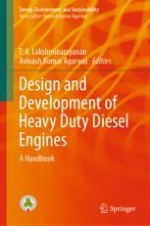2020 | OriginalPaper | Buchkapitel
9. Conversion of Diesel Engines for CNG Fuel Operation
verfasst von : G. Jeevan Dass, P. A. Lakshminarayanan
Erschienen in: Design and Development of Heavy Duty Diesel Engines
Verlag: Springer Singapore
Aktivieren Sie unsere intelligente Suche, um passende Fachinhalte oder Patente zu finden.
Wählen Sie Textabschnitte aus um mit Künstlicher Intelligenz passenden Patente zu finden. powered by
Markieren Sie Textabschnitte, um KI-gestützt weitere passende Inhalte zu finden. powered by
